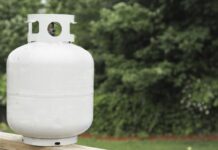
Lead-containing paint is a severe issue for many homeowners. If you built your home before 1970, there’s a good chance that it has lead paint. Although paint containing lead is no longer used in homes, it can still be a significant problem if not correctly dealt with. This blog post will discuss what you need to know about working with lead paint. We’ll cover topics such as testing for lead in paint and The Six Restricted Practices of Lead Paint Removal.
Before discussing the restricted practices, it’s important to understand how paint containing lead can be a hazard.
Lead Toxicity
Lead is a toxic metal that can cause serious health problems if ingested or inhaled. Lead exposure is especially harmful to children, who are more likely to suffer from lead poisoning. Symptoms of lead poisoning include abdominal pain, constipation, headaches, irritability, and learning difficulties. In severe cases, lead poisoning can lead to coma and death.
Testing For Lead In Paint
There are two ways that you can test for lead in paint:
You can buy a lead test kit from a hardware store or hire a certified professional.
Lead test kits are relatively inexpensive, and they will give you an indication of whether or not there is lead present in the paint. If you are unsure whether or not you want to test the paint yourself, you can always hire a certified professional.
Certified professionals have the training and experience to test for lead properly, and they can also provide you with information about how to remove it from your home. Whichever method you choose, follow the safety precautions listed on the kit or in the professional’s report.
Restrictions On Lead Paint Removal
When it comes to lead paint removal, there are a few things that you need to keep in mind. Let’s look at them in detail:
Restrictions On Pregnant Women And Children
First and foremost, pregnant women and children should not remove lead paint because they are especially vulnerable to the harmful effects of lead poisoning. Children exposed to lead can experience developmental delays, cognitive problems, and seizures. Pregnant women exposed to lead can give birth to infants with low birth weight, brain damage, and other health problems.
Avoid Abrasive Blasting Or Sandblasting To Remove Lead Paint
Abrasive blasting, also known as sandblasting, is a process that uses a pressurized stream of abrasive material to remove paint and other finishes from surfaces. Lead paint is a common type containing lead, a toxic metal. When lead paint is sandblasted, the lead can become airborne and be inhaled, leading to lead poisoning.
Lung disorders can also occur due to the inhalation of lead-contaminated dust. To protect workers and the public from the dangers of lead paint, you should avoid abrasive blasting or sandblasting to remove lead paint.
You can use a HEPA attachment on power tools to help keep the lead paint particles from becoming airborne.
Don’t Scrape; Chip To Remove Lead Paint
If you have lead paint in your home, you might be tempted to chip or scrape it off before painting over it. However, this is not the best idea. Lead paint can be dangerous, and if you create any friction against the lead paint surface, you could create dangerous lead dust.
The best way to deal with lead paint is to wipe it down with a warm, wet cloth before painting over it; This will remove any loose paint and will help to ensure that your new paint job is safe and effective.
Power Washing To Remove Lead Paint
You may think that power washing is a quick and easy way to remove lead paint, but it’s not a good idea. Here’s why:
First, it’s important to remember that lead paint needs to be contained. If you power wash it, the lead paint can become airborne and contaminate your home and family. Therefore trapping the water and lead particles is crucial.
You Should Throw Any Disposable Gloves Away
If you are working with lead paint, it’s essential to protect yourself and your family. One of the most important things to remember is always to wear gloves; This will help keep the lead paint from contact with your skin. It’s also important to remember any disposable gloves should be disposed of effectively.
Overall, it’s essential to be very careful when removing lead paint. Pregnant women and children should not remove lead paint at all, as they are especially vulnerable to the harmful effects of lead poisoning. Sandblasting or power washing can also be dangerous, as it can release lead particles into the air. The best way to deal with lead paint is to wipe it down with a wet cloth before painting over it. When working with lead paint, always wear gloves and dispose of any disposable gloves properly. Infra-red heating can also be dangerous, as it can vaporize lead particles in the paint. Therefore, it’s important to use caution when removing lead paint and follow all safety precautions.









